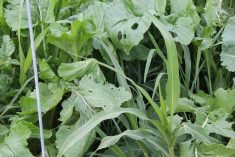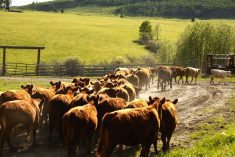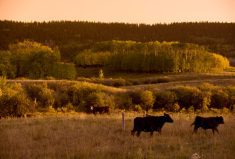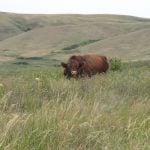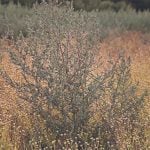[Updated Jan. 3, 2023]
When most people think of British Columbia, they think of white-capped waves on the Pacific Ocean off the Sunshine Coast, the sweeping, snowy Coast Mountains of Whistler, or trees hung heavy with fruit in the Okanagan.
Most people wouldn’t think of a landscape very similar to Alberta, with gently rolling hills divided by cropland, the whole region split by the Peace River. According to Nadia Mori, it’s a region that’s often overlooked.
Read Also
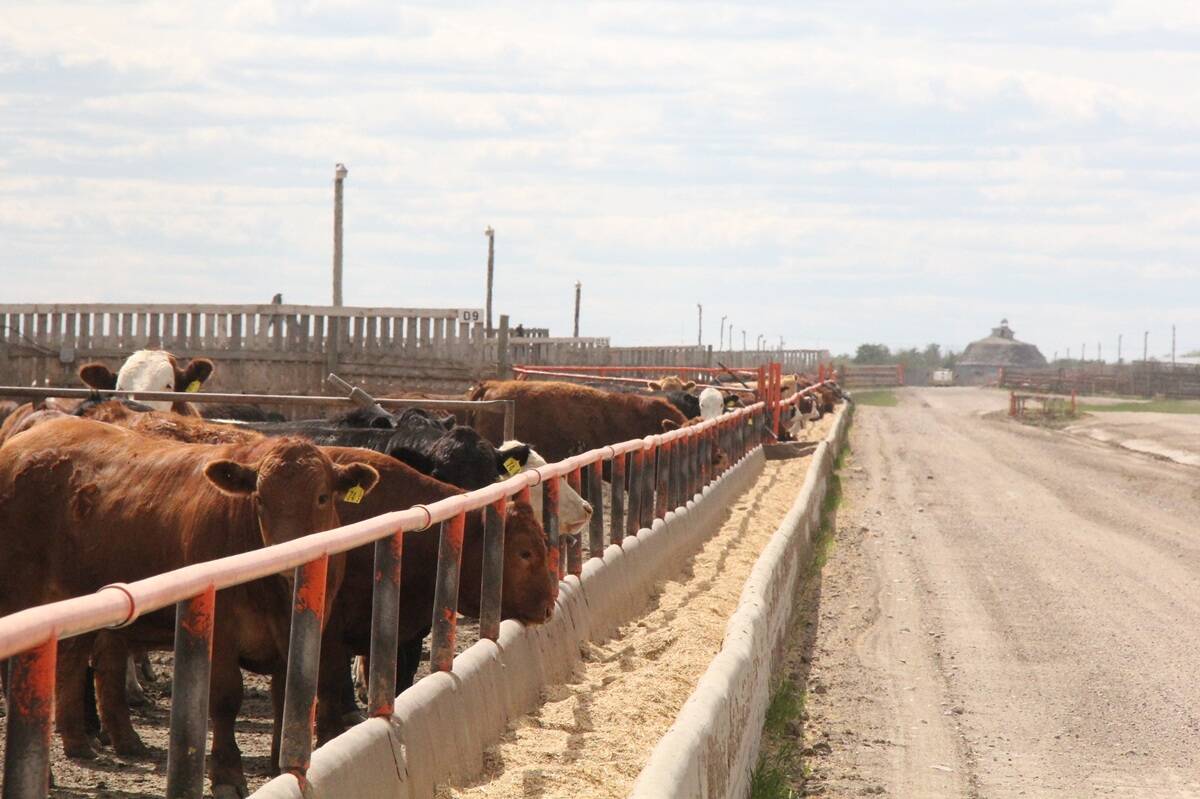
Unwinding the fibre in feedlot cattle diets
Research into how barley rolling method and undigestible NDF levels affect animal performance and digestive health in finishing diets
But the area is being acknowledged with the Peace Region Living Lab.
Announced in July by federal Agriculture Minister Marie-Claude Bibeau, Living Labs is a federal initiative to have producers work with scientists and other collaborators and organizations to test innovative practices and technologies. Previously, the Living Labs were only in Manitoba, Ontario, Quebec and Prince Edward Island. Now, they have been expanded across the country, with an emphasis on agri-environmental issues.
The Peace Region Living Lab is unique, however, because it crosses the border into Alberta. Mori, the extension co-ordinator for the Living Lab, says pairing two provinces for a program is uncommon but is being done in the Peace because of the agricultural similarities of the regions in B.C. and Alberta.
Previously, Mori worked for 10 years as a forage and range extension specialist in Saskatchewan. When she got involved with the B.C. Forage Association, she saw an opportunity to continue the work she loved with the Living Lab.
“I was quite passionate about putting on things that could possibly be useful for farmers and ranchers,” Mori says. “And just help them have the knowledge that they need to make things go better on their operations.”
The Peace Region Living Lab focuses on a variety of different topics, such as lime application and vermicomposting. There’s also a large emphasis on the cattle industry, with the Living Lab exploring topics such as intercropping, cover cropping and rotational grazing.
Research topics
Mori says the mission of the Living Lab is “enhancing agro-ecosystems in the Peace region,” while focusing on carbon sequestration and greenhouse gas emission reduction.
“The carbon sequestration and greenhouse gas emission is sort of the overarching sheet that binds it all together,” she says.
Producers usually bring forward projects that they would like to see researched.
“The 55 producer projects that we have there, I would say every one is unique,” Mori says.
She says there are a variety of projects being done on many different topics. While some are seeing how they could rejuvenate a pasture or hayfield without breaking the soil to reseed, others are taking a deeper look at multi-paddock grazing and how quickly it might make an impact on the land. There are also projects comparing very dense bale grazing to a lower-density bale graze. These are some of the things producers in the area have expressed interest in learning.
Each project always comes back to the environment, however. Along with the greenhouse gas emissions and carbon sequestration focus, the Living Lab will be doing other things to focus on the environment, such as environmental co-benefits, which is finding other benefits that are a result of applying the best management practices, Mori explains.
Producer role
Living Labs take a unique approach to research by directly involving producers. The producer commits to joining the project for however long it may go on, and they provide some of their land to be used to conduct the experiments, trials and samples. In return, the producer gets to express exactly what they would like researched.
“The special thing about the Living Labs is that it’s producer-focused and driven,” Mori says. The producer works with a research team, which is assigned by Agriculture and Agri-Food Canada. Mori says they can also pull in additional expertise, if need be, such as from agrologists or experts from nearby universities.
Mori says the Peace Region Living Lab is also doing something different, with what she calls a “learning cluster.” This means that if something isn’t going as expected for a producer, the Living Lab can bring an expert to go out to the field with the producer. Neighbours who are also interested in the topic can join, and as a group, they can discuss what may be going wrong.
“Then we can have just a little session looking at what might be going on on that parcel,” Mori says. “And so, again, each producer can make this a very tailored experience, what would be helpful for them.”
Karin Schmid is a beef production and extension specialist with Alberta Beef Producers, which is heading the Alberta AgriSystems Living Lab, currently focusing on the Peace, west-central and southern Alberta.* She says the Living Lab gives researchers and industry experts a chance to work directly with producers in the field.
“It’s about looking to see what’s happening on the ground under actual production conditions,” Schmid says. “And so it also has producers involved every step of the way with their experts.”
Schmid adds the lab demonstrates the ways that beef and forage farmers, alongside crop producers, can expand on the work they’re already doing on their operations. Hand-in-hand with that, the Living Lab provides an opportunity to show whether what researchers say should work does work in the field and if geography or production systems play a part.
“I also think it could really create a community of like-minded producers interested in trying new things or tweaking existing practices who can share experiences, learn from each other and better others,” she says.
Soil sampling and mapping
Although Food and Water Wellness is more involved with other Living Labs in Alberta, Kimberly Cornish, director of the organization, says they also wanted to provide the same service to the Peace Region Living Lab as the other ones: predictive soil mapping and metre-deep soil sampling.
To map the soils, they use their soil samples to create maps of soil variables from 60 sites in the region. Cornish says they use 60 layers of data to determine the most efficient places to sample.
“When that sample is taken, it can be extrapolated without a lot of noise, because it’s already kind of correlated to all of those layers of data,” Cornish says. “And then we add in another 200 layers of remotely sensed data across the growing seasons to create those carbon maps and bulk density maps.”
They will take samples from all the different sites in the Peace region, as well as a few additional sites.
“They’ll be able to have a carbon map for the entire peace region as an outcome of the project, as opposed to just data on the specific farms and the Living Lab that they’re working on,” Cornish says.
The future
The Peace Region Living Lab is just starting. The first year of the five-year project was spent as an establishment year, gathering baseline data. Mori explains funding was approved late in the year, after farmers had already made plans and the cropping season was well underway.
However, 2023 will see the practices implemented. Mori says they will also have at least seven or eight field tours every summer, put on by the different groups involved with the lab.
Schmid says there are indications the Alberta AgriSystems Living Lab could get extended past the five years, but even with only the five years, she believes they can create change with the work they’ll do through the lab.
“I think, hopefully, we’ll eventually be able to provide some direction around government policy solutions to climate resilience that are practical for producers.”
As a resident of the Peace region, Mori takes pride in the work taking place on the Living Lab — both on the B.C. and Alberta sides. Although the government has emphasized the importance of the environmental work that will come out of these Living Labs, Mori says it’s also important to recognize and build on the environmental work producers are already doing.
“I feel as a producer, you always get these new buzzwords shot at you, like very recently it was ‘regenerative agriculture’ and before that it was ‘sustainable’,” she says. “I sense that producers are pretty tired of this … I think at the end of the day, what we’re trying to do is just help the producer have an easier time to make the bottom line work, as it’s not easy being out there, with all the change that’s being thrown at you.”
She says if they can find ways to help producers improve how their farms operate, then that is just as important.
“If we can help a little bit with that, then I think we’ve been successful.”
*Update: This story originally stated the Alberta Beef Producers (ABP) were involved in the Peace Region Living Lab. ABP is not involved with the Peace Region Living Lab, but is heading the Alberta AgriSystems Living Lab, which is present in the Peace region, as well as southern and west-central Alberta. We regret the error.




